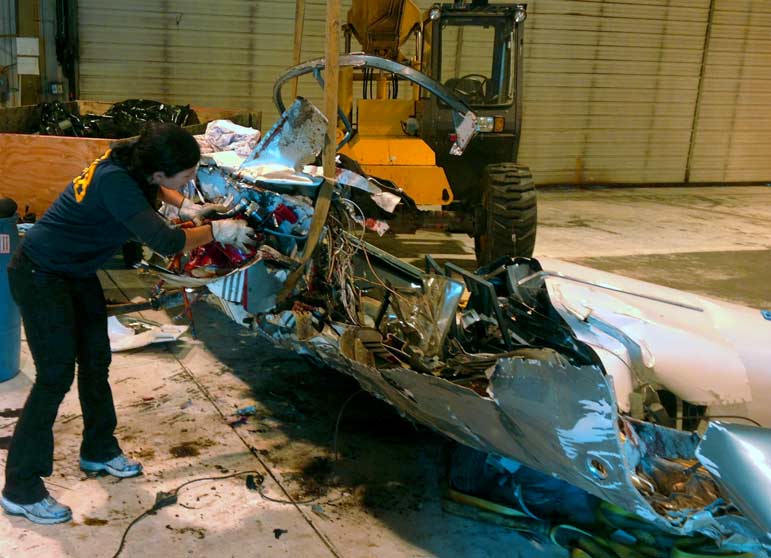
The operators of a small plane that crashed Wednesday in Grand Teton National Park had reported a problem with the aircraft and were returning to the airport just before the experimental plane crashed, killing both people on board.
Russell Kamtz, 67, and Carol Kamtz, 65, both of Loveland, Colo. died in the crash, which is being investigated by the National Transportation Safety board.
NTSB Air Safety Investigator Zoë Keliher has provided some initial findings on the incident, according to a statement released by the park’s public affairs office.
Shortly after takeoff, the Kamtzes made a call to the airport control tower and reported having a problem with their aircraft, and that they were returning to the airport, Keliher determined, although additional details about the problem were not disclosed.
The couple had flown from Montana to the Jackson Hole Airport where they refueled, spending just 15 minutes on the ground.
According to eyewitnesses, one of the aircraft’s wings dipped as it was turning to the west at low altitude after takeoff. Witnesses also reported that the nose of the plane dove toward the ground and the aircraft descended in a near vertical position before impact. Witnesses described seeing neither flames nor fire when the aircraft crashed into the open sagebrush flats shortly before noon, about 3/4 mile south of the Jackson Hole Airport.
Russell Kamtz was a certified pilot; however, Carol was not certified to fly. They were aboard their RV7 aircraft—a two-seat, single-engine, low-wing, experimental airplane. These aircraft are generally homebuilt from a kit. Keliher had not yet determined whether the Kamtzes had assembled the plane they were flying.
Keliher and two assistants are working to capture all evidence associated with the crash site and wreckage. NTSB will examine the engine, air frame and other mechanical evidence, and review the crash signature on the ground to determine how the plane hit and what crash patterns it may show.
The agency typically examines the actions of the pilot, the function of the plane, the weather and other environmental factors as part of crash investigations.
Further details will be made public as the NTSB investigation concludes.
Although some witness accounts were already taken, investigators request that anyone with information about the incident call 208-352-0235.
Contact Yellowstone Gate at 307-213-9818 or [email protected].
